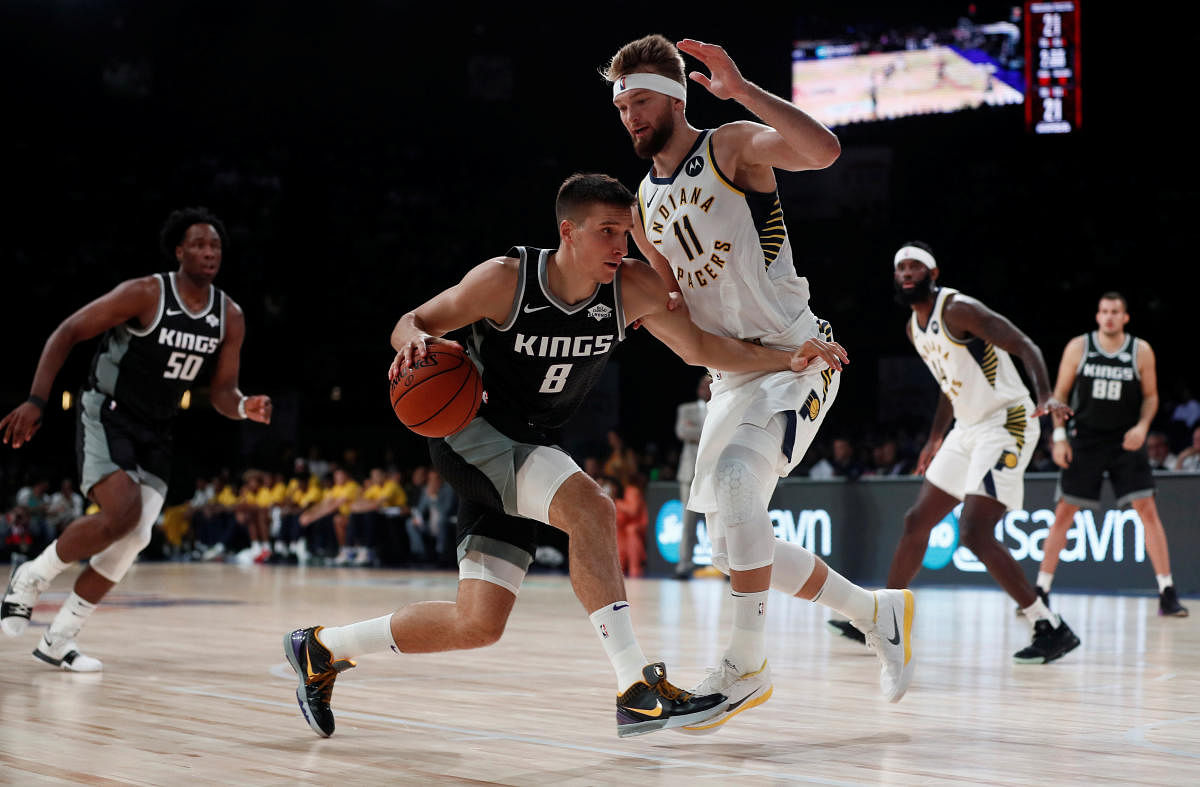
The National Basketball Association is a business before anything else and they have been eyeing the Indian market for over a decade with one thing in mind: revenue. It must be handed to them, though. They have been brazen about it.
They’re banking on the sheer volume of people in India to generate a money stream, it’s a module which came to fruition in China over four decades ago, and they won’t rest until the same is achieved here. With Reliance on their side, at least money and promotion won’t be a deterrent. For now.
Truth be told, if the NBA could generate merchandise sales and viewership in India - without having to pump in millions of dollars by way of exhibition games, camps, coaching clinics and visits by their athletes - they would happily do so. They would also give up on the idea of creating the bedrock for the first player from India in the NBA, an experiential lesson through Yao Ming’s rise to the Hall of Fame from the streets of Shanghai to the courts in Houston.
But let us get the facts right. While the conduct of two exhibition games, in addition to their pre-existing pursuits, in India bodes well for fans in a country starved of excitement outside cricketing boundaries, it barely does enough to improve the quality of the sport in the country. It is a progress, but it isn’t significant enough. The case last week was such that only a few fans - those fanatic enough to spend upwards of Rs 4000 - and investors got something out of what was a fanfare over two days in Mumbai as the Sacramento Kings faced Indiana Pacers in two pre-season games.
Meanwhile, those playing the sport professionally continued to bust their knees on weather-affected concrete courts without health insurance and those playing at an amateur level smothered dreams of the next tier after witnessing the apathy with which the sport is handled in India.
NBA’s effort to pique interest is barely enough to spike shoe sales, and no amount of publicity can replace a full-time league run by adept officials. Adam Silver, the NBA commissioner, is in talks with the Basketball Federation of India to start a league over the next five years. While that is good news, if the league is run the way most State-leagues are in the country, it is back to square one.
The quality of coaching is looked into by the NBA but these short-term clinics are akin to bandages to heal a fractured femur. It might come as a surprise but the standard of officiating has led to some of the best names on the National and State circuits to turn away from the game. The NBA hasn’t looked into this aspect, yet.
Neither have they considered introducing an NCAA (National Collegiate Athletic Association) format championship - college basketball in the US - in a country which has had the tendency to turn away from the sport for its stop-start nature. NCAA’s spectator-friendly format could do to basketball what the Premier Kabaddi League did for kabaddi.
Even so, it won’t mean India will be any closer to their own player in the NBA. The NBA has become a truly world-class product in its expansion and inclusion, but it is far too early for India to integrate its ideals.
Scott Flemming, a former collegiate who has led NBA Academy India since 2012, was told in his interview for his India role that he had five years to find a unicorn hooper. He is yet to succeed, but under his guidance, the academy has brought about a ‘new wave’ of basketball. Unfortunately for him, his best efforts have only resulted in a change at the camp in Gurgaon, the evolution has not extended beyond those maple-wood courts at the academy.
Despite NBA’s best efforts over the last decade or so with the inception of a junior Academy in Gurgaon and several other programmes, they are yet to identify one player worthy of sustained attention, even at the D-League level. Each year there is hype about one giant from the northern belt of India that is touted as the next big thing - it’s Princepal Singh at the moment. It’s a juggernaut of promises unfulfilled, and this sugar rush of interest in the aftermath of the exhibition games too is bound to come crashing.
The new wave of basketball in India is only reflective in the improved physic of athletes but few players possess the acumen to survive outside these shores. It doesn’t help either that they have to go through several bureaucratic layers to play in leagues outside the country. With such red tape, it’s exhausting for players to make basketball their full-time profession.
Which is why many players, even those representing the country, play for their employers for years and settle for a desk job early, understandably saving their Achilles for what is left in life.
Lest we forget, the Indian way of basketball is far too unique for the NBA to inject its corporate ideals into, yet. The NBA is looking to streamline the Federation by way of example but that sense of professionalism isn’t going to be inculcated without a fight. And, if one can be honest, it isn’t the NBA’s job to set our staggered system in place. If anything, it is BFI’s job to execute on the intense groundwork done by the NBA.
So, do two exhibition games at a small stadium in Mumbai do anything to address and potentially alleviate any of these issues? We would like to say otherwise but no is the answer.
The answer is bound to remain so until the national body understands its role and state bodies translate that vision into action.
And we can use the sense of urgency shown by the NBA to bring about this change.